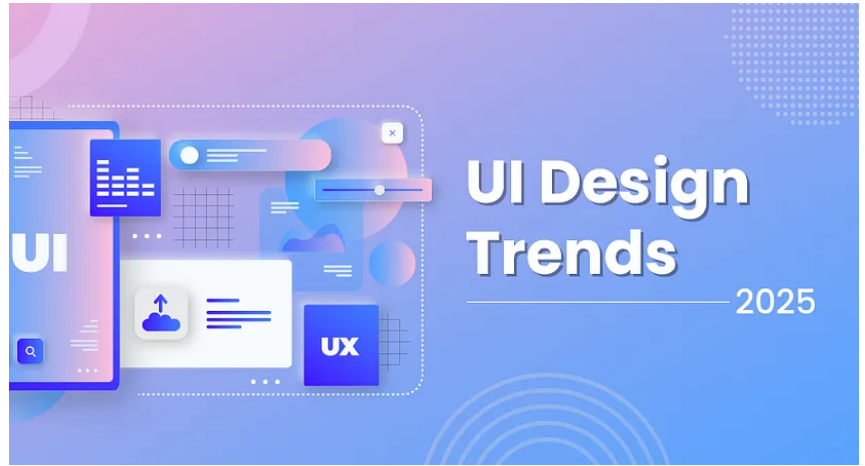Top UI Design Trends That Every UI Agency Should Follow in 2025

Top UI Design Trends That Every UI Agency Should Follow in 2025
In 2025, UI design is evolving rapidly, with new trends shaping user experiences across industries. For a UI agency, staying ahead requires adopting innovative design principles that enhance usability, accessibility, and engagement. This article explores key UI trends that will define the future of digital interfaces, ensuring UI agencies create seamless and visually compelling experiences.
Why UI Trends Matter for a UI Agency
A UI agency focuses on creating interfaces that improve user interaction with digital products. Modern UI trends help agencies:
- Enhance user engagement and retention
- Improve accessibility and inclusivity
- Align with emerging technology and user expectations
- Strengthen brand identity and differentiation
Keeping up with trends ensures that UI designs remain fresh, relevant, and competitive in a fast-changing digital world.
1. AI-Powered UI Design
Artificial Intelligence (AI) is revolutionizing UI design, enabling personalized experiences and automation. In 2025, AI-driven interfaces will:
- Use predictive analytics to anticipate user needs
- Automate design elements based on user behavior
- Improve accessibility through adaptive UI components
Example: AI-Powered Chatbots
Chatbots will become more intuitive, offering real-time UI adjustments based on user interactions. UI agencies should integrate AI-powered solutions to create dynamic, responsive designs.
2. Minimalist and Neumorphism UI
Minimalism continues to dominate, but neuromorphism, a blend of skeuomorphism and flat design is gaining traction. Features include:
- Soft shadows and subtle gradients for a 3D effect
- Simplified, clutter-free interfaces
- Enhanced depth perception for better usability
Why It Matters
Users prefer clean, distraction-free interfaces. A UI agency should focus on balancing aesthetics with functionality, ensuring intuitive navigation.
3. Motion UI and Microinteractions
Animations and microinteractions are essential for engaging users. In 2025, UI designs will incorporate:
- Subtle hover effects to guide users
- Loading animations that enhance perceived performance
- Gesture-based interactions for seamless navigation
Example: Mobile UI Enhancements
Apps like Instagram and TikTok use motion UI to create a fluid, interactive experience. A UI agency should incorporate smooth transitions to improve engagement.
4. Dark Mode Optimization
Dark mode has become a user preference rather than an optional feature. In 2025, UI agencies should:
- Design adaptive dark modes that adjust based on user environment
- Enhance readability with high-contrast typography
- Improve battery efficiency on OLED screens
Implementation Tip
Use dynamic contrast adjustment to ensure visibility across different lighting conditions.
5. Inclusive and Accessible UI
Accessibility is a priority in modern UI design. Key focus areas include:
- WCAG compliance for color contrast and typography
- Voice UI integration for hands-free navigation
- Keyboard-friendly navigation for users with disabilities
Case Study: Apple’s Accessibility Features
Apple’s VoiceOver and color contrast settings exemplify inclusive UI. A UI agency should integrate similar accessibility-first design principles.
6. 3D Elements and Immersive Experiences
With advancements in WebGL and CSS, 3D design is more accessible than ever. Emerging trends include:
- 3D buttons and icons for depth and realism
- Augmented Reality (AR) integration for product visualization
- Parallax scrolling effects for engaging storytelling
Example: E-Commerce UI
Brands like IKEA use AR to let users visualize products in real-world environments. A UI agency should leverage 3D design to enhance digital interactions.
7. Glassmorphism and Frosted Effects
Glassmorphism, characterized by blurred transparency and layered depth, is making a strong comeback. Features include:
- Frosted glass effects for layering
- Translucent UI elements for visual hierarchy
- Depth-enhancing gradients for a modern look
Usage in UI
Finance and SaaS platforms use glassmorphism for dashboards and widgets, creating a sleek, futuristic appearance.
8. Voice and Gesture-Based UI
Voice and gesture navigation are transforming UI interactions. In 2025, expect:
- Voice-assisted navigation in mobile and web apps
- Gesture-based controls for touchless interaction
- AI-driven voice search optimization for enhanced usability
Example: Google Assistant
Google’s voice UI sets a benchmark for hands-free interaction. A UI agency should consider voice UI integration for better accessibility.
9. Dynamic and Adaptive UI
User preferences vary, and adaptive UIs personalize experiences. Trends in this space include:
- Personalized layouts based on user behavior
- Adaptive font scaling for readability
- Mood-based color schemes using AI
Case Study: Spotify
Spotify adjusts UI themes based on user activity. UI agencies should explore adaptive designs to enhance engagement.
10. Sustainable and Eco-Friendly UI
Sustainability in UI design is becoming more critical. This trend includes:
- Energy-efficient dark mode designs
- Lightweight UI elements to reduce load times
- Sustainable color palettes to minimize eye strain
Why It’s Important
Eco-conscious users prefer sustainable design choices. A UI agency should implement green UI strategies to align with global sustainability goals.
11. Hyper-Personalization in UI
With AI-driven analytics, hyper-personalized UI experiences will dominate. Features include:
- Real-time content adjustments based on user behavior
- Dynamic UI layouts for different user segments
- AI-generated design recommendations for better engagement
Example: E-commerce UI Personalization
Platforms like Amazon use AI to modify product suggestions and layouts based on browsing history. UI agencies should implement dynamic personalization for a tailored user experience.
12. Variable Typography and Fluid Design
Typography is evolving beyond static fonts. In 2025, expect:
- Variable fonts that adapt to screen sizes
- Fluid typography that scales dynamically
- Animated text effects for interactive storytelling
Why It’s Important
Typography plays a crucial role in user readability and brand identity. A UI agency should experiment with adaptable font styles to enhance visual appeal.
FAQs About UI Design Trends in 2025
1. How can a UI agency implement AI in design?
A UI agency can integrate AI for automated design adjustments, user behavior prediction, and accessibility enhancements. AI-driven chatbots and smart UI elements improve user interactions.
2. Why is dark mode optimization crucial?
Dark mode reduces eye strain, saves battery on OLED screens, and enhances UI aesthetics. UI agencies should ensure adaptive dark mode support.
3. What are the benefits of inclusive UI design?
Inclusive UI improves accessibility, making digital products usable for people with disabilities. It enhances user experience and expands audience reach.
4. How does motion UI improve user engagement?
Motion UI elements, like microinteractions and smooth transitions, create a more intuitive and engaging experience, reducing bounce rates.
5. What role does sustainability play in UI design?
Sustainable UI practices, such as energy-efficient designs and optimized performance, reduce environmental impact and improve user satisfaction.
A UI agency must embrace these trends to stay competitive in 2025. Implementing AI, motion UI, accessibility, and immersive design ensures better user experiences and future-proof designs.










